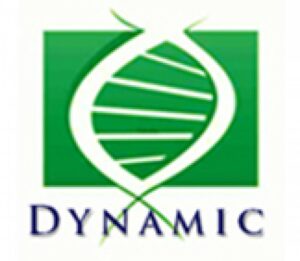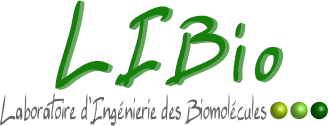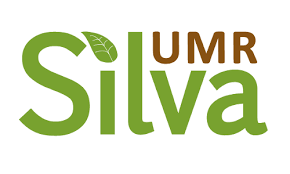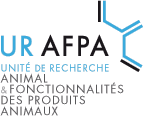The laboratories of the A2F scientific pole
DynAMic
Genome dynamics and microbial adaptation

Presentation
The Genome Dynamics and Microbial Adaptation Unit (DynAMic) is a joint research unit between the Université de Lorraine (UL) and INRAE (National Institute for research in agriculture, food and environment). Created in 1985, under contract with INRA since 1995 and UMR since 2001, the unit is associated with the Microbiology and Food Chain (MICA) department of INRAE. The laboratory is located on the site of the Faculty of Sciences and Technologies of the UL.
Our unit studies two bacterial groups and their respective ecosystems: streptomycetes and forest soil (rhizosphere) and streptococci in their different ecosystems (food, oral cavity and human digestive tract).
The unit’s research theme concerns the mechanisms of rapid evolution in bacteria. Horizontal gene transfer, i.e. the exchange of genetic information between related and unrelated bacteria in the same ecosystem, is the predominant mechanism of bacterial evolution. The study of this phenomenon includes the characterization of the molecular mechanisms of the transfer of genetic information and its integration into the host genome and the mechanisms of regulation of these processes as well as the study of the impact of the transferred sequences in the host bacterium (genome diversity, new functions, adaptation).
Our objective is to (i) deepen our understanding of the molecular mechanisms of gene transfer and their regulation (transfer of mobile genetic elements in streptococci, role of homologous versus illegitimate recombination in genetic variability in Streptomyces) and (ii) study the impact of accessory genes on strain adaptability. In streptococci, we study the role and impact of mobile genetic elements (Integrative and Conjugative Elements or ICEs and Integrative and Mobilizable Elements or IMEs) in the dissemination of antibiotic resistance and in the emergence of pathogens. For the Streptomyces model, a reverse ecology approach is used to correlate the dynamics of genomes with their functional role in the soil ecosystem, and to study the impact of secondary metabolism diversity on molecular dialogues and on the homeostasis of microbial populations within the niche. This fundamental research is enhanced by exploiting the secondary metabolism of soil bacteria (antibiotics, antifungal, anticancer agents).
Our research combines genomics (genome mining and comparative genomics) with functional approaches (bacterial genetics, molecular microbiology, protein biochemistry, structure).
UMR1128 is supported by the Laboratory of Excellence ARBRE (ANR-11-LABX-0002-01). The UMR is also supported within the framework of Lorraine University of Excellence (IMPACT Biomolecules project, Mirabelle+).
People
Joint Research Unit : 1128
Number of teams: 2
- PR : 3
- DR : 1
- MCF : 8
- CR : 1
- BIATSS : 7
Team leaders :
- ICE-TeA : transfer and adaptation in Streptococci :
Nathalie LEBLOND-BOURGET
- StrADa : Streptomyces adaptation :
Pierre LEBLOND
Contact details
Director : Bertrand AIGLE
bertrand.aigle@univ-lorraine.fr
Deputy director : Sophie PAYOT LACROIX
sophie.payot-lacroix@inrae.fr
Administrative manager : Layla RATEAU
layla.rateau@univ-lorraine.fr
Laboratory website :
UMR1128
Faculté des Sciences et Technologies
UNIVERSITE DE LORRAINE
Boulevard des Aiguillettes -BP 70239
54506 Vandœuvre-lès-Nancy
IAM
Tree/Microorganism Interactions

Presentation
The Joint Research Unit Tree/Microbe Interactions (IAM) Université de Lorraine / INRAE was created on January 1st 2001, as the result of a merger between the INRA Laboratory of Forest Microbiology and the Laboratory of Forest Biology of the University Henri Poincaré, to which the INRA Laboratory of Forest Pathology was later attached in January 2005. Since its creation, the unit is located on two distinct geographical sites: the INRA campus in Champenoux and the Faculty of Science and Technology in Vandoeuvre-lès-Nancy. In 2020, following the merger of the INRA and IRSTEA research institutes, the UMR is under the dual supervision of the University of Lorraine and INRAE. Since 2020, the unit has been headed by a director (S. Duplessis, DR INRAE) assisted by two deputy directors (P. Frey, DR INRAE & N. Rouhier, PR UL). It is composed of 44 permanent staff (31 INRAE, 13 UL) and welcomes about 50 non-permanent staff per year.
Since 2001, the primary goal of the IAM research unit has been to increase knowledge of the biology and ecology of interactions between microorganisms and forest trees with the aim of improving understanding of the functioning of forest ecosystems and ultimately being able to propose sustainable management of these ecosystems in the current context of increased human activity and global change. This thematic continuity, mainly based on the understanding of interactions between trees and the cohort of micro-organisms (bacteria and fungi) associated with them within forest ecosystems, is structured around two axes: integrative biology and ecology of these interactions.
These structuring axes make it possible to approach the study of these interactions through multidisciplinary and complementary approaches at different spatio-temporal scales, to meet the three main scientific objectives that we have set, namely:
- Understanding the molecular, ecological and environmental mechanisms governing the interactions between trees and microorganisms
- Understanding the functional role of interactions between trees and microorganisms in forest ecosystems
- Understanding the processes governing the evolution and adaptation of tree/microorganism associations to enable better anticipation of potential impacts related to global changes.
The IAM unit is structured into three research teams:
- Ecogenomics of interactions (team manager: Stephane Uroz, DR INRAE):
The team project aims to decipher the molecular mechanisms governing the continuum of interactions between trees, fungi, bacteria and soil in order to improve the understanding of the structure and function of forest microbial communities, through three interconnected lines of research, (i) evolutionary genomics of fungal lifestyles, (ii) molecular mechanisms of tree-fungi-bacteria-soil interactions, and (iii) diversity and function of microbial communities
- Ecology of forest pathogenic fungi (team manager: Pascal Frey, DR INRAE):
This team is working on the study of the ecology, epidemiology and evolutionary biology of emerging diseases of forest trees, including some major forest diseases (poplar rust, ash blight, alder dieback, oak powdery mildew)
- Stress response and redox regulation (team manager: Melanie Morel-Rouhier, PR UL):
With its expertise in protein structure/function analysis, this team is developing two lines of research, (i) the response to environmental constraints of trees and plants in general, and (ii) the degradation of organic matter by saprophytic fungi in forest ecosystems.
People
INRAE Joint Research Unit (UMR_A) 1136, number of teams: 3
- PR : 2
- DR : 7
- MCF : 6
- IR : 5
- CR : 3
- BIATSS : 21
Contact details
Director :
Sebastien Duplessis (INRAE)
sebastion.duplessis@inrae.fr
Deputy Directors :
Pascal FREY (INRAE)
pascal.frey@inrae.fr
Nicolas Rouhier (University of Lorraine)
nicolas.rouhier@univ-lorraine.fr
Laboratory website : https://mycor.nancy.inra.fr/IAM
Administrative managers :
Corinne TEISSIER (University of Lorraine)
corinne.teissier@univ-lorraine.fr
Agnès DIDIER (INRAE)
agnes.didier@inrae.fr
Marie Claude MONCHABLON (INRAE)
marie-claude.monchablon@inrae.fr
Nicole THIRION (INRAE)
nicole.thirion@inrae.fr
Faculté des Sciences et Technologies
Entrée 1B, 3ème Etage
Boulevard des Aiguillettes -BP 70239
54506 Vandœuvre-lès-Nancy
Institut National de la Recherche Agronomique
Centre INRA Nancy-Lorraine
Route d’Amance
54280 Champenoux
LAE
Agronomy and Environment Laboratory

Presentation
The UL-INRA-Nancy-Colmar Agronomy and Environment Laboratory Joint Research Unit (LAE) was created on 1 January 2001, by the merger of the “Agronomy and Environment” laboratory, a unit of the INPL-ENSAIA in Nancy associated with INRA since 1987, and the INRA Agronomy Laboratory in Colmar (http://lae.univ-lorraine.fr/accueil/). Since its creation, the Unit has thus had the particularity of being located on 2 distinct geographical sites: ENSAIA (Nancy) and the INRA Centre in Colmar. The UMR has been evaluated and renewed for the four-year contracts 2005-2008, 2009-2012 and the five-year contract 2013-2017. The unit is headed by a Director (F. Bourgaud, PR UL) assisted by two Deputy Directors (S. Plantureux (PR UL) and C. Bockstaller (IR INRA). All the LAE staff (10 teacher-researchers, 2 INRA researchers and 12 BIATSS) and the supervisors have approved the candidature of Christophe Robin (DR INRA) to carry the new unit project over the period 2018-2022.
The objectives of the research carried out within the LAE are to understand the functioning of 1) plants under constraints and 2) plant production systems, by focusing on the agronomic and environmental consequences of this functioning. Among the issues at stake in EAL research are the ecological intensification of production, the maintenance of biodiversity in ecosystems, and biocontrol. The LAE has implemented an HR policy that enables the unit to bring together staff with complementary skills capable of using tools such as Ecophysiology, Microbiology, Mathematics, Molecular Biology, Enzymology and Biochemistry. The work carried out in the unit is carried out in interaction with national and international public research teams and with private structures.
The LAE is structured in 2 teams whose research themes are centred on the functioning of the plant in interaction with its environment. The “Secondary metabolism” team is particularly interested in understanding the secondary metabolism that is essential in the adaptation processes of plants to their environment. Using ecophysiological and metabolic engineering approaches, it seeks to evaluate the response of certain plants to biotic and abiotic constraints. The “Sustainable Agriculture” team studies plants in their environment, from the farm plot to the landscape, seeking to understand and model the relationships between environmental management (crops, grasslands and plot edges), biodiversity and ecosystem services. This work leads to the development of methods and tools for assessing the environmental impacts of agricultural practices.
People
Joint Research Unit UMR 1121 UL/INRAE
Number of teams: 2
- PR : 2
- DR : 1
- MCF : 7
- IR : 5
- CR : 1
- BIATSS : 10
Contact details
Director : Christophe ROBIN
christophe.robin@univ-lorraine.fr
Deputy director : Olivier THEROND
oliviertherond@inrae.fr
Administrative managers :
Thamara OLIVIER (Université de Lorraine, site de Nancy)
thamara.olivier@univ-lorraine.fr
Nathalie CARNOVALE (Inra, site de Colmar)
nathalie.carnovale-kopp@colmar.inrae.fr
Laboratory website : http://lae.univ-lorraine.fr
Centre Inra Grand Est-Colmar
UMR Agronomie et Environnement Nancy
28 Rue de Herrlisheim
68000 COLMAR
ENSAIA Université de Lorraine
Laboratoire Agronomie et Environnement
2 Avenue de la forêt de Haye BP 172
54505 Vandœuvre-lès-Nancy Cedex
LIBio
Biomolecular Engineering Laboratory

Presentation
The Laboratoire d’Ingénierie Des Biomolécules (Biomolecular Engineering Laboratory [LIBio]) is a Host Team of the University of Lorraine (EA 4367) located in ENSAIA. LIBio has been ISO 9001 certified since 2008. The laboratory is made up of 50 individuals, including 16 teacher-researchers, two engineers and 10 support staff (administrative, technical, social and library).
The research work is centred on the exploitation of agroresources for food-related and non-food related purposes.The research project takes account of the current societal and economic challenges that are the management of natural resources and the improvement of individual health through the intake of functional foods
The laboratory possesses a skill set that allows interdisciplinary research to be conducted, combining designs and methods in the fields of physical chemistry, biochemistry, microbiology, and process engineering. The purpose of the project is to stabilise and/or design vectors or matrices structured for targeted functionalities in defined environmental conditions. The originality of our approach lies in the use of agroresources from diverse origins, mainly dairy, plant-based and marine. Several types of biopolymers (proteins, polysaccharides) and biosourced lipids (polar, long chain polyunsaturated) are used directly or after extraction by green processes developed or available in LIBio.
The scientific project is centred around the understanding of the mechanisms governing the structuring of soft matter. This implies understanding the relationships between the nature, structure and functionalisation of the biosourced material and the properties of the vectors and matrices developed, as well as the effects of abiotic parameters (temperature, pH, chemical environment) and biotic parameters (bacteria, eukaryotic cells) on the reactivity of matrices and vectorised active compounds, the interactions and the transfer mechanisms at different levels within these complex systems. The understanding of the set of phenomena operating in the structuring of soft matter enables the rational design of nano- and or micrometric supramolecular architectures, endowed with targeted functionalities and/ or adapted to the vectorization of different active compounds with varied physicochemical properties (hydrophilia, hydrophobia, charge, size).
People
Hosting Team (EA) 4367
Number of teams: 1
- PR : 7
- MCF : 8
- IR : 2
- BIATSS : 10
Contact details
Director : Anne Marie REVOL
anne-marie.revol@univ-lorraine.fr
Deputy director : Claire GAIANI
claire.gaiani@univ-lorraine.fr
Administrative manager : Anne Robustelli
anne.robustelli@univ-lorraine.fr
Laboratory website : http://libio.univ-lorraine.fr/
LIBio ENSAIA Université de Lorraine
2 avenue de la fôret de Haye
BP 172 – 54501 Vandœuvre-lès-Nancy
Silva

Presentation
The Silva Joint Research Unit brings together people from AgroParisTech, INRAE, and the Université de Lorraine to conduct multidisciplinary and integrative research on wood, trees and forest ecosystems. It is the result of the merge of the joint research units « Forest Ecology and Ecophysiology » [EEF] and « Laboratory of Wood Forest Resource Studies » [LERFoB] in January 2018.
The aim of the UMR Silva is to develop pure and applied research works in order to answer society questions, in particular those of forest managers, on the adaptation of forest ecosystems to global changes and of changes in social expectations of forest products and services, including their contribution to climate change mitigation.
Research objectives are studied within 3 research teams which are complementary in the different approaches and scales that are implemented:
- The PHARE « Physiology of trees in response to environment » team.
- The ForeSTree « Forest, Stand, Tree » team.
- The DYVE « Long term dynamics and vulnerability of ecosystems under low anthropisation » team.
These research teams are supported by an analytical platform « Silvatech », a GIS-DataBase technical platform, and an « Administrative Management » team.
UMR Silva is part of the « Laboratoires d’Excellence » « Labex-ARBRE » and « Labex-CEBA », of « Lorraine Université d’Excellence », and of the “AgreenSkills mobility program“.
People
Joint Research Unit UMR INRAE 1434
Number of teams: 3
- PR : 3
- DR : 7
- MCF : 9
- IR : 15
- CR : 15
- BIATSS : 61
- Others CH : 6
Team leaders
- PHARE « Physiology of trees in response to environment » : Francis Colin (INRAE) et Didier le Thiec (INRAE)
- ForeSTree « Forest, Stand, Tree »: Nicolas Marron (INRAE) et Fleur Longuetaud (INRAE)
- EcoSILVA « Long term dynamics and vulnerability of ecosystems under low anthropisation »: Jean Luc Dupouey (INRAE)
Contact details
Director : Damien BONAL
damien.bonal@inrae.fr
Deputy director :
Thiéry CONSTANT
constant@nancy.inrae.fr
Jean Claude GEGOUT
jean-claude.gegout@agroparistech.fr
Yves JOLIVET
yves.jolivet@univ-lorraine.fr
- Analysis platform SilvaTech:
- Plateau technique des systèmes d’informations géographiques et bases de données :
Damien MAURICE (INRAE)
Laboratory website : https://www6.nancy.inra.fr/silva/UMR-Silva
UMR SILVA
Faculté des Sciences et Technologies
Université de Lorraine
Boulevard des Aiguillettes
BP 70239
54506 Vandœuvre-lès-Nancy
UMR SILVA
Centre INRA Grand Est
Site de Nancy
Rue d’Amance
54280 Champenoux
AgroParisTech Nancy
54042 Nancy cedex
URAFPA
Animal and features of animal products

Presentation
URAFPA is a laboratory of the University of Lorraine and associated with the INRAE Grand Est Nancy Center as USC (Unit under contract) n°0340 with the PHASE Department “Animal Physiology & Breeding Systems”.
The research unit’s project focuses on food safety and the prevention of deficits linked to aging populations, associated with animal production (aquatic and terrestrial) and the quality of animal products.
To address these societal challenges, the unit is structured around three research projects:
- Project DAC : Domestication of new species in fish farming: development of a generic approach and effects of domestication (project leader, Dr. S. Milla),
- Project MRCA: Evaluation and control of transfers of micropollutants and residues in the food chain (project leader, Pr C. Feidt),
- Project QUALIVIE: Quality of diet and aging (project leader, Dr F. Yen Potin),
Our unit relies on four research platforms (Experimental Platform in Aquaculture- PEA, Functional and Structural Approach to Cell Interactions Platform – ASIA, Structural and Metabolomic Analysis Platform – PASM, Bioavailability and Bioactivity Platform – Bio-DA), which have been or are in the process of acquiring the StAR LUE quality label. Every year, URAFPA hosts French and international students and interns, doctoral students, post-doctoral scientists and researchers.
People
Hospitality team (EA) 3998
Number of teams: 3
- PR : 8
- DR : 1
- MCF : 14
- IR : 2
- CR : 1
- BIATSS : 9
Contact details
Director : Pascal FONTAINE
p.fontaine@univ-lorraine.fr
Administrative manager : Catherine LARRIERE
catherine.larriere@univ-lorraine.fr
Laboratory website : http://urafpa.fr
ENSAIA
UNIVERSITE DE LORRAINE
2 Avenue de la Forêt de Haye
54501 Vandoeuvre-lès-Nancy
Faculté des Sciences et Technologies
Entrée 1B – Bât Biologie
Boulevard des Aiguilettes
BP 70239
54506 Vandoeuvre-lès-Nancy



